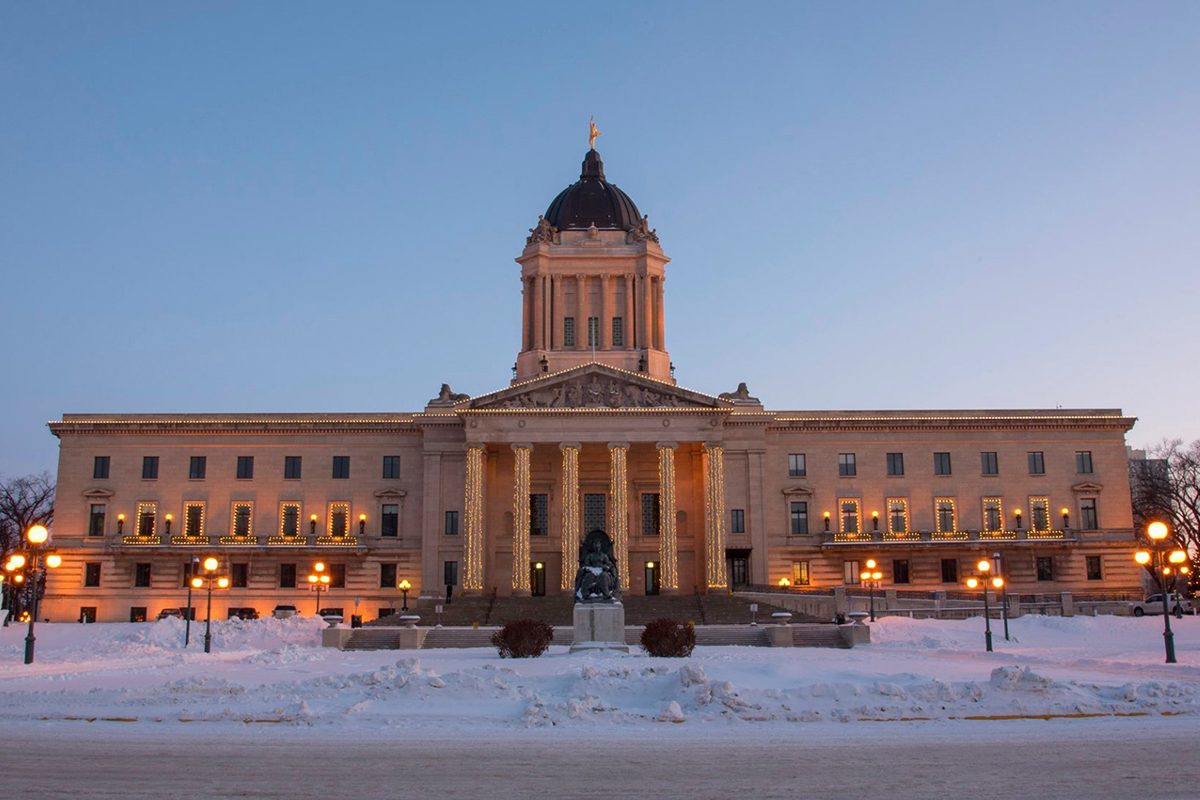
The Manitoba Legislative Building. // Image from the Legislative Assembly of Manitoba /Facebook.
CBC: Rowing against the tide of history: Pallister’s pandemic response could do lasting damage to Manitoba economy
The following is an op-ed from Robert Chernomas, UM economics professor, and Ian Hudson, UM economics professor and department head, that was published online by CBC :
Manitoba’s provincial government is keen to have us all row in the same direction to combat COVID-19. But currently, Brian Pallister’s government is not only failing to dip its oar in the water, it’s actively rowing in the wrong direction.
When there is a crisis, we turn to government. In order to prevent the collapse of the economy, aggressive fiscal and monetary policy become the order of the day.
The Manitoba government, though, appears to disagree with the weight of historical evidence, preferring to focus on the costs to the provincial treasury rather than costs of the government’s lack of action on the lives of Manitobans.
As economist Joseph Stiglitz put it, when you are at war, you don’t ask “Can we afford it?”
In 1930, as the Great Depression took hold in the U.S., President Herbert Hoover infamously made the depression worse by focusing on balancing the budget. As the Great Depression wore on, deficit spending became widely accepted as a remedy to mitigate the crisis (as historian Michael Horn put it, “only government could keep hundreds of thousands of Canadians from starving or freezing to death”).
But the spending was too parsimonious to actually end the Depression.
When the Second World War began, government spending expanded significantly, essential to winning the war and finally getting us out of the Great Depression. At the end of the war in the U.S. and Canada, the debt-to-income ratio rose to historic levels — in 1946, Canada’s debt was 109 per cent of GDP.
It declined over the next few decades while the economy prospered not because anxious post-depression governments cut public spending, but in part because they spent taxpayer dollars to develop our modern health and education sectors, making productive investments in infrastructure and research.
Rather, the government used the resulting growth in GDP to pay down the debt over time. Keynesian economics 101.
Without support, pain will be prolonged
In the 2008 Great Recession, the opposition parties forced Conservative Prime Minister Stephen Harper to pass a massive fiscal stimulus package to prevent unemployment and bankruptcy. The Bank of Canada contributed tens of billions of dollars to shore up our financial system.
The Bush and Obama administrations in the U.S. did the same to stave off a potential repeat of the Great Depression. In the early days of the crisis, conservative Republican George W. Bush argued that without a government bailout of the financial sector, “this sucker could go down.”
The treasury bailed out the financial system and Obama’s $800-billion stimulus bill extended unemployment benefits, rebuilt roads and bridges, prevented teacher layoffs and provided temporary help for people who lost their jobs or needed other assistance because of the poor economy. For economists like Paul Krugman, while the stimulus prevented a deeper decline in the economy, it should have been much larger.
In the current pandemic crisis, Prime Minister Trudeau is clearly paying attention to these lessons of history by ensuring the needy will not freeze in the dark, that the federal public sector maintains its workforce and wages, and that businesses and their workers will get support.
He understands that without this kind of government support, huge structural problems with the economy will prolong the pain well beyond the end of the pandemic.
Like Hoover, though, the Pallister government is rowing in the opposite direction by pursuing its long-standing desire to reduce the size of the government with plans to cut funding for charities and non-profit organizations, the public sector and the universities.
The province is threatening to lay off workers and cut wages in the middle of the pandemic.
Thus far, the provincial government’s underwhelming support measures consist of hiring a local firm to set up a call centre to help Manitobans access federal money and a program to give eligible small businesses $6,000 each, neither of which suggests a government committed to addressing the massive economic downturn caused by the crisis.
Economists Jesse Hajer and Lynne Fernandez estimate that the proposed cuts would reduce provincial GDP by between $1.3 and $1.5 billion. Members of Manitoba’s business community have described the province’s approach as “penny wise and pound foolish.”
As Stiglitz suggests, such cutbacks in jobs and funding “will show up in the unemployment statistics, but the deeper effects — on our economic growth and social fabric — won’t be fully apparent for years to come.”
No other government in Canada has done more to damage our future with less economic justification than the government of Manitoba.
As Asper School professor Shiu-Yik Au perceptively pointed out, while Ontario and Quebec face greater health costs from the pandemic, both provinces have taken much greater responsibility to help their citizens.
Among its actions, Ontario increased payments to low-income seniors and families with children, and funded Indigenous communities and municipalities. In Quebec, the government has provided emergency support to small and medium businesses, the tourism industry, and workers. Both of these provinces have higher debt-to-GDP levels than Manitoba.
Austerity has failed as an economic strategy wherever and whenever it has been tried. The Pallister government is rowing against the tide of history, creating lasting damage for Manitobans to clean up for years to come.






